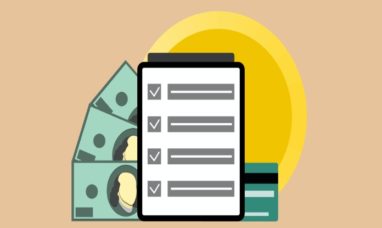Credit can be obtained through a variety of means, including credit cards, personal loans, mortgages, auto loans, and purchase installment financing. Each type of credit serves a specific to give a goal you may have some purpose, whether it’s to finance the purchase of a home or car or to allow you to divide a large expense into more manageable monthly payments.
A personal loan can be used as a form of a credit to pay for large purchases or to pay off high-interest debt. Personal loans, which typically have lower interest rates than credit cards, can be utilized to combine several credit card debts into one, lower monthly payment.
Although borrowing money is a big responsibility, credit can be a very useful financial tool. Before applying for a personal loan, carefully consider the benefits and drawbacks that may affect your credit situation.
What Exactly Is a Personal Loan?
When requesting a personal loan, you are asking a lending institution, such as a bank or credit union, to lend you a specific amount of money. A personal loan, unlike a mortgage, which must be used to pay for a home, and an auto loan, which must be used to finance the purchase of a vehicle, can be used for a variety of purposes. Consider obtaining a personal loan to help pay for education or medical expenses, purchasing a large a new furnace or appliance for the home, or debt consolidation.
Paying off credit card debt differs from repaying a personal loan. You must make fixed-amount payments over a set period of time to repay a personal loan.
Before applying for a personal loan, you should be familiar with the following loan terms:
Principal — The principal is the amount you borrowed. If you apply for a personal loan, for example, the principal is $10,000. The principal you owe is the foundation upon which the lender will impose the interest rate. As you make payments on a personal loan, the principal decreases.
Interest — When you obtain You consent to pay back a personal loan with interest. over time, which is essentially the lender’s “fee” for allowing you to use their funds. A monthly interest fee will be added to the amount of your payment that is applied to principal reduction. Typically, interest is stated as a percentage rate.
APR — The term “annual percentage rate” (APR) refers to a loan, the lender will typically charge fees in addition to interest. By incorporating both your interest rate and any lender fees, APR provides a more accurate picture of the true cost of your loan. APR comparisons are a useful tool for determining the affordability and worth of different personal loans.
Term — The loan’s term is the number of months you have to repay it. When a lender accepts your application for a personal loan, they will inform you of the APR and terms offered.
Monthly payment — Throughout the term, you will be required to make a monthly payment to the lender. This payment will cover the principal balance of the debt you owe as well as a portion of the interest you will accrue over the term of the loan.
Personal loans are frequently unsecured loans that do not require collateral. When you take out a home or auto loan, the real estate you purchase serves as collateral to the lender. A personal loan is usually only secured by the borrower’s or cosigner’s excellent credit. Although collateral is required, secured personal loans from some lenders may have lower interest rates than unsecured loans.
How to Apply for a Personal Loan
Every time you apply for credit from a lender, you must go through the application process. Reviewing your credit report and credit score before submitting a personal loan application is critical for better understanding what potential lenders may find when they pull your credit report and scores. Remember that accessing your credit report has no effect on your credit scores, so check it as often as you need to.
After reviewing your credit report and taking any necessary actions in light of what you find, Any financial institution will accept your personal loan application, including a bank, credit union, or online lender. Every lender you apply to will review your credit report and scores.
Lenders typically consider your credit scores when evaluating your application. A higher credit score usually entitles you to lower interest rates and loan terms on any loans you apply for. Your debt-to-income ratio (DTI), which compares your total monthly debt to your total monthly income, will also be considered by the lender. To calculate your DTI, add all of your recurring monthly obligations (such as credit card bills, mortgage payments, auto loans, student loans, and so on) and divide by your monthly gross income (what you earn before taxes, withholdings, and expenses). Your DTI is calculated by converting the decimal result to a percentage. Although lenders prefer DTIs of less than 36%, many will approve loans for borrowers with higher ratios.
Reduce the Influence of Inquiries
When you apply for credit, a hard inquiry is recorded on your credit report, and a lender checks it. It takes two years after a thorough investigation to have little effect on credit reports. Excessive hard inquiries, on the other hand, can immediately lower your credit score.
If you intend to apply to multiple lenders to compare options, make sure to do so as soon as possible to minimize the impact of hard inquiries. Credit scoring models will typically treat as a single event, multiple hard inquiries for the same kind of credit product if they occur within a few weeks. Over the course of several months, keep your application and comparison shopping private.
Another option is to ask a lender if they can prescreen or preapprove you for a loan offer. Preapproval is frequently a soft inquiry that has no effect on credit scores.
Personal Loans: Advantages and Disadvantages
A personal loan, like any other type of credit, has advantages and disadvantages depending on your financial situation. The suitability of a loan is largely determined by how prudently you manage your borrowing in the long run.
A personal loan can assist you in making a large purchase. When you have a consistent income, splitting dividing a significant price into several little payments over time can assist in it more manageable. Personal loan interest rates are typically lower than those associated with credit card purchases. A personal loan can also be used to consolidate several high-interest credit card debts into a single, lower-interest payment.
By taking out a personal loan and repaying it on time, you build a good credit history for yourself, which improves your score in many credit scoring calculations. Your responsible credit use can positively impact a variety of credit scoring factors, including payment history, credit utilization ratio, and credit mix.
It can, however, harm your credit if you make payments after the due date or skip a payment entirely. Missed or late payments can result in lower credit scores, which can make it more difficult to obtain credit on favorable terms.
If you fall significantly behind on your payments, your personal loan may go into collections or be charged off. Both of these negative outcomes appear on your credit reports and can have an impact on your credit scores. Finally, if a personal loan makes it difficult for you to pay all of your bills on time, you should consider other options. While it is not ideal, bankruptcy may be an option. Keep in mind, however, that it will appear on your credit report and have a negative impact on your credit for seven to ten years.
Personal Loans and Credit
Any credit, including a personal loan, should be used responsibly. Personal loans can be beneficial when used wisely, but you should never take on debt without first carefully examining your overall financial situation.
To be aware of your current credit standing, it is best to check your credit report before making any significant credit decision. Furthermore, reviewing your report can help you understand how your decision may affect your credit in the future.
Featured Image: Unsplash © Green Chameleon







